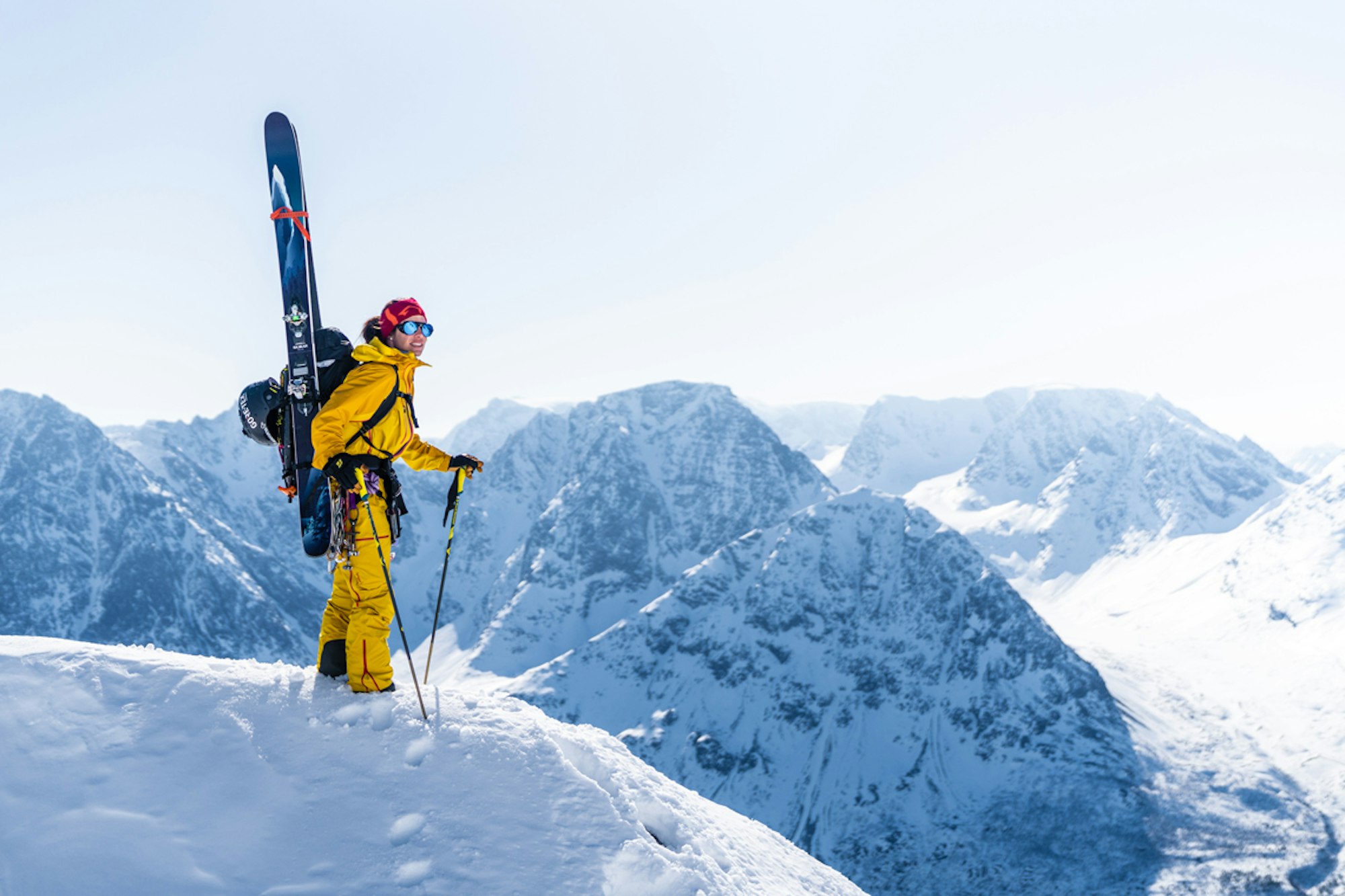Featured Image: Courtesy of Norrøna
Danger and risk are innately part of skiing. Clicking your feet into a pair of skis and pointing them down a steep mountain face has never been the safest activity. But it’s these same dangers, risks—and, ultimately, rewards—that lure so many to the sport. There are few feelings greater than reaching top speed, crushing a gnarly couloir or sending a personal first descent. The difference between a beautiful day in the backcountry and a rescue mission is more than just an athlete’s level of preparedness but also, his or her ability to adjust to Mother Nature’s threats and make the right decisions. This became inherently clear for one film team who embarked on a trip to Lyngen, Norway to test out the new line of ski touring gear from Norwegian outdoor brand, Norrøna.
The team was small, consisting of professional skiers Nikolai Schirmer, Asbjørn E. Næss and ski guide Merrick Mordal and photographers Bård Basberg and Joonas Mattila. The objective on this trip was to explore Northern Norway’s Lyngen Alps, a 56-mile-long peninsula known for some of the country’s best steep skiing sporting Norrøna’s new line of gear, which was inspired by the region. Here, skiers can feast on alpine peaks, couloirs, open mountain plateaus and sail-to-ski terrain that extends as far as the eye can see, and the best time to go is in the spring from March to May. This last spring, however, Lyngen’s inconsistent snowpack posed a serious threat for Mordal and the crew.
With plans to spend two weeks filming Lyngen’s steepest lines, the original storyline for the short film quickly shifted. On the second day of filming, concerned about the snowpack’s stability, Mordal decided to test a slope while on belay. Suddenly, the 35-year-old mom of two found herself clinging to her rope as the snow ripped out from under her in an avalanche at the top of 1,222-meter [4,009 feet] Sofiatinden mountain. In this moment, it was Mordal’s decades-long experience ski and climb guiding that accounted for sound decision-making and the team’s safe descent.
Raised in Anchorage among the Alaska Range, Mordal is a modern-day Wonder Woman. At the age of eight she began ice climbing with her mom. By the time she was 12 she was the youngest person to summit Denali–the tallest mountian in North America. As a teenager, Mordal competed on the U.S. Junior National Snowboard Team. Now in her mid-thirties, Mordal is living in Norway with her husband and two young children, earning her second master’s degree and working on her IFMGA certification–making her the first mom in Norway to enroll in the rigorous, minimum-three-year program. We caught up with Mordal to learn more about the trip, that fateful snow slide and where this Super Mom is headed next.
Let’s talk about Lyngen. How did the conversation for this trip start?
It was Asbjørn that asked me. We had a common friend who was a professional skier on the [Freeride World Tour] circuit with Asbjørn and I guess this friend told him about me. So, then I knew I was doing this ski movie in the fall, [the trip] would be in the spring. Nikolai lives in Tromsø… I met him just once before he went to Canada for the season. It was planned to be two weeks. Asbjørn and Bård were there the whole two weeks, Nikolai had to take a little break because he got sick and I [guided] a ski-and-sail five days in the middle of it.
You said you were sort of dreading the trip. What were some of those anxieties?
I was pretty nervous going into the trip because it was such a sketchy snowpack this season and neither [Asbjørn or Nikolai] had been in the snowpack before. I didn’t know the photographers. There was an email going around that they wanted the theme to be “Mission Impossible”–that we were going to try something like a new line. It seemed like it was going down the wrong road for the conditions. There was a lot of talk about building a big kicker and throwing some lines out there that were not really viable.
I said we needed a guide and they agreed to it, at least in the beginning because I didn’t want to be the safety [personnel] and the skier. I’m not used to having a picture and film crew and haven’t really been in front of the lens ever. I’m getting more used to it now, but I’d rather do things than pose.
The first day the safety measures were very minimal and they lost the drone. The guide, who is my friend, hadn’t done that much alpine climbing on loose rock so I ended up having to lead the four pitches to go get the drone. The snow on the way down, we saw how the weak layers were there and we were lucky that nothing happened when we skied down the couloirs. The next day we decided that we would just slow down and work as a group and communicate and test things before we skied them.
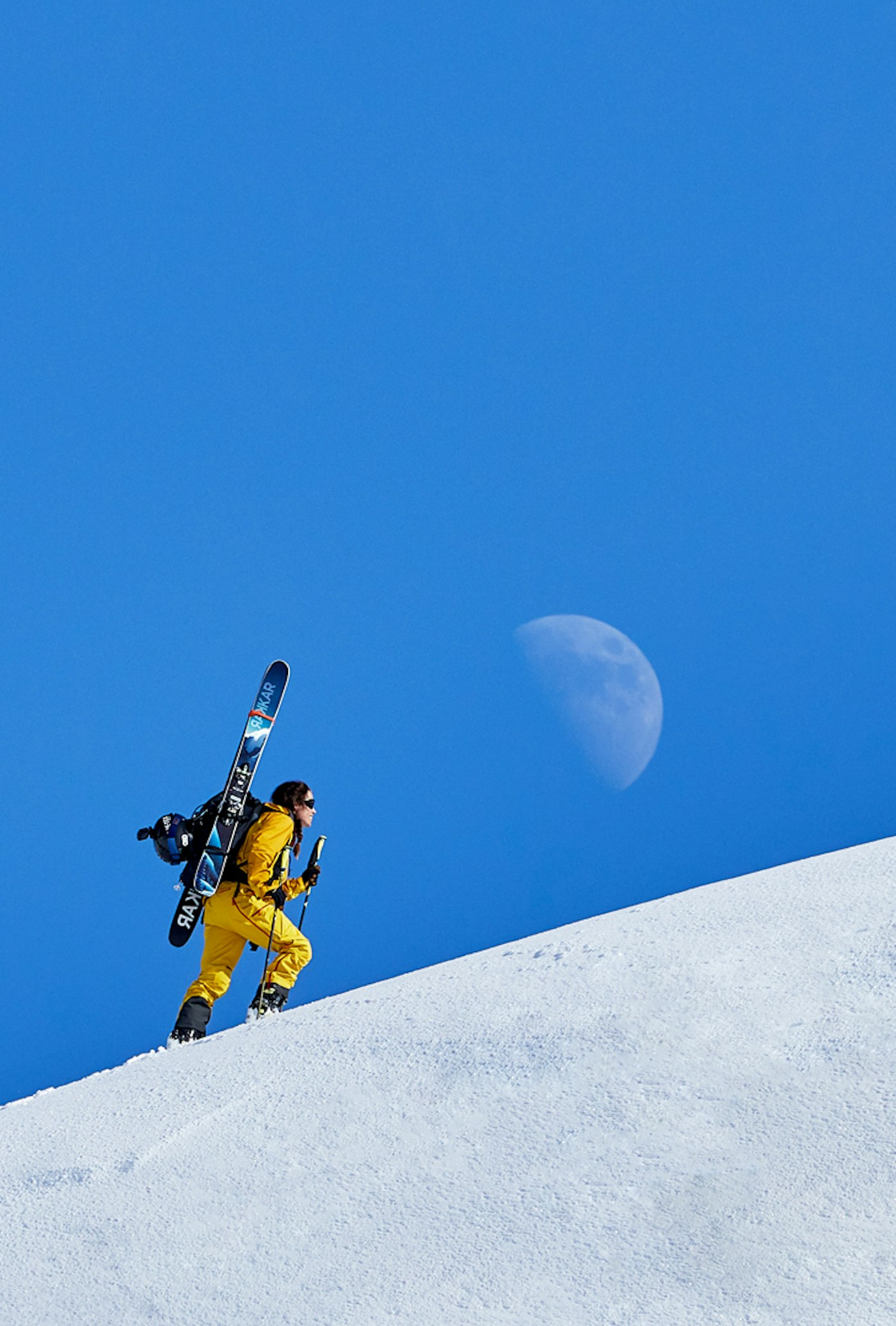
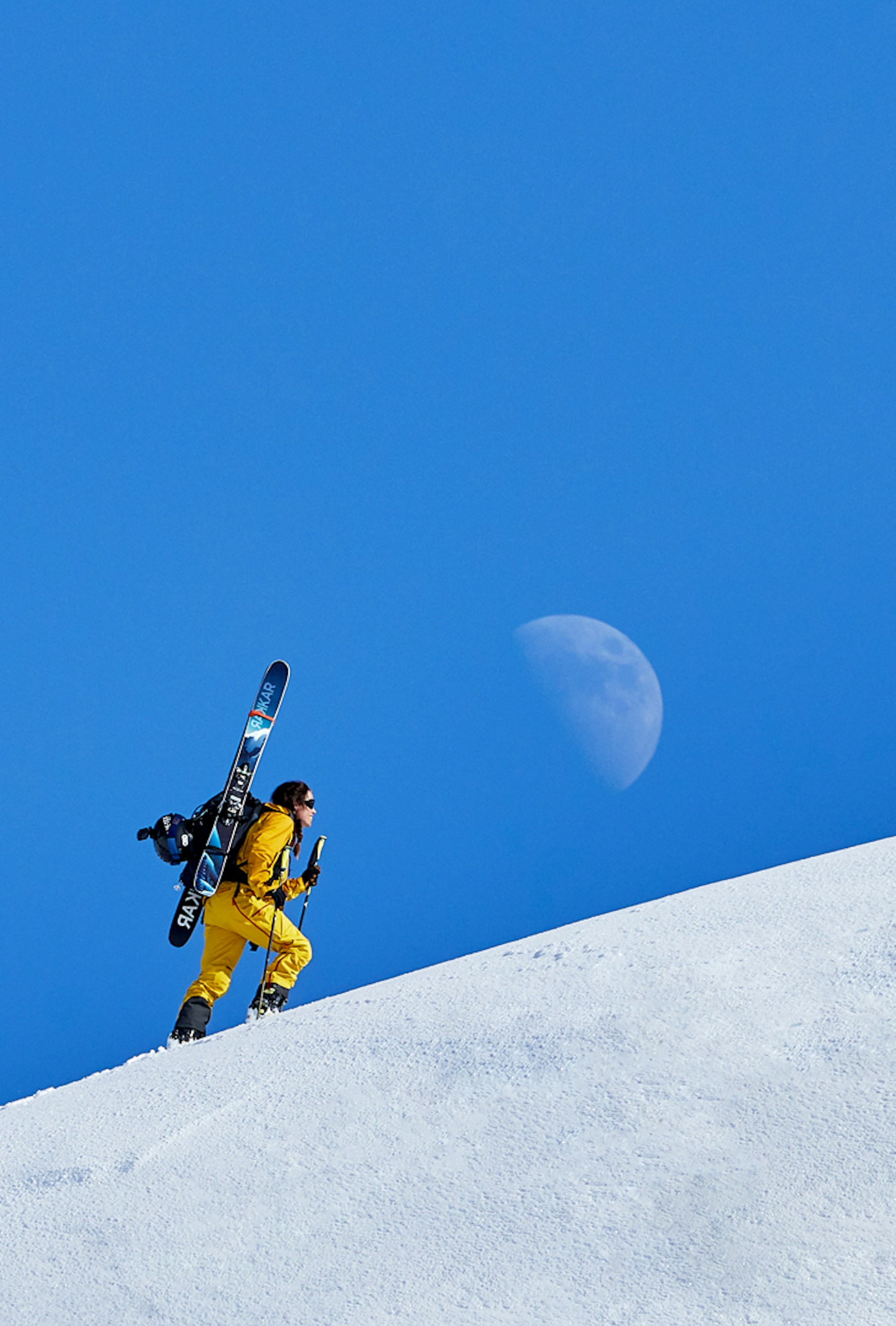
At the age of 12, Mordal was the youngest person to summit Denali–the tallest mountain in North America.
You’re at the top of Sofiatinden and the snow starts to slide underneath you. What’s going through your mind?
Before I went down [to test the snow], I placed the rope–I made a little trench because the rock that we put it behind, it wasn’t like a horn, it wasn’t that great–so if I were to fall it wouldn’t slide up, it would be like an actual train anchor. My first thought was ‘Did I make a trench? Did I place the rope?’…I wanted to feel like Asbjørn had me.
It was your guiding expertise that allowed a safe descent for the entire team, that’s a lot of pressure in the moment.
I’ve been in similar situations before, it just became not a photoshoot at all for me. It became we’re just getting out of here safely, I don’t really care what pictures are taken. Priorities definitely shifted. It was pretty crazy though because there were several weak layers and usually when [snow] rips–especially when it’s bigger–it takes everything with it, but because of the momentum and the pressure… some parts were still hanging. There was one crack [where] Nikolai went first and it was only a few centimeters open. By the time I went it was a meter and a half, two meters open, hanging because it was unsupported on the downside. That was pretty scary.
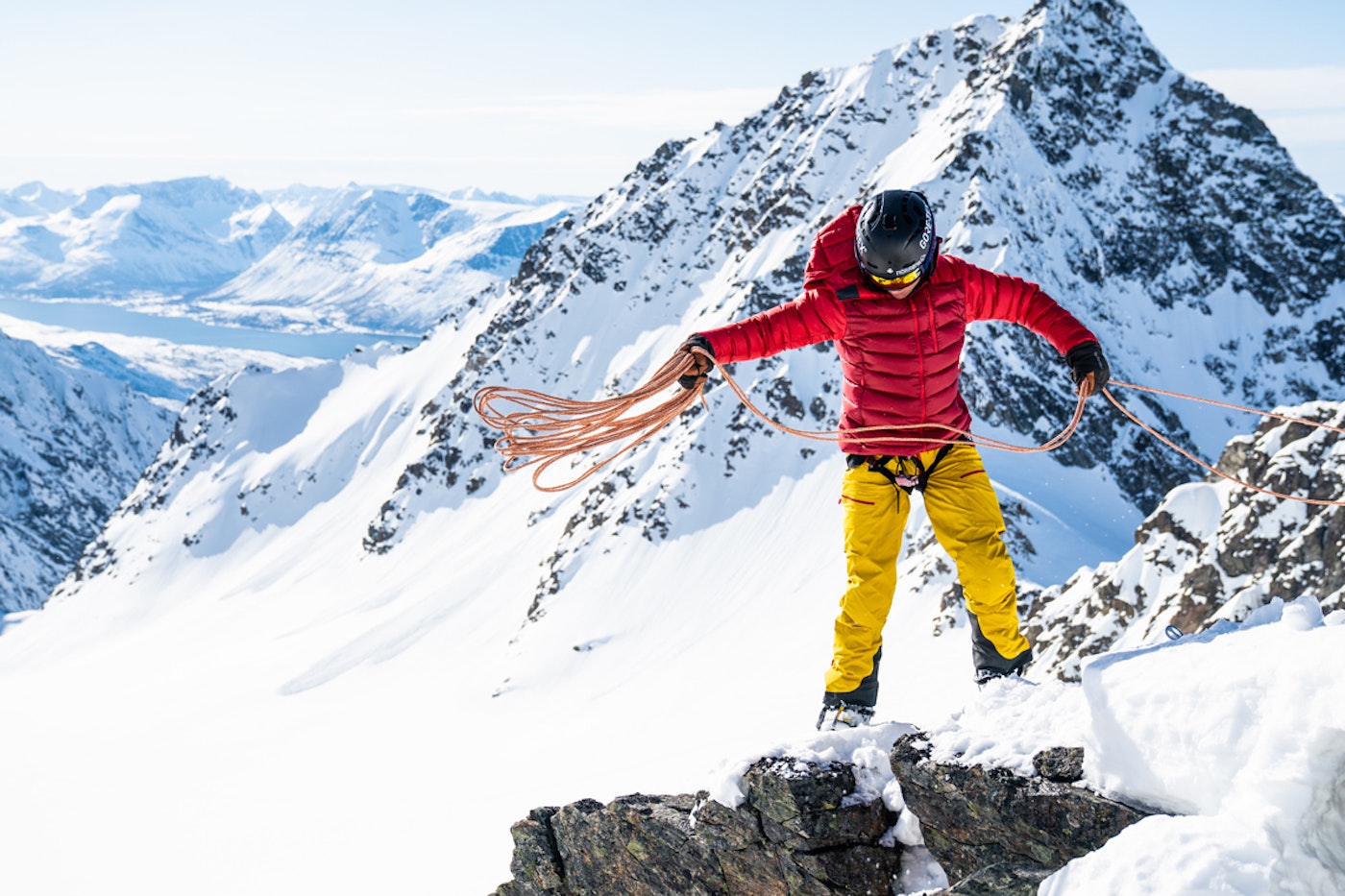
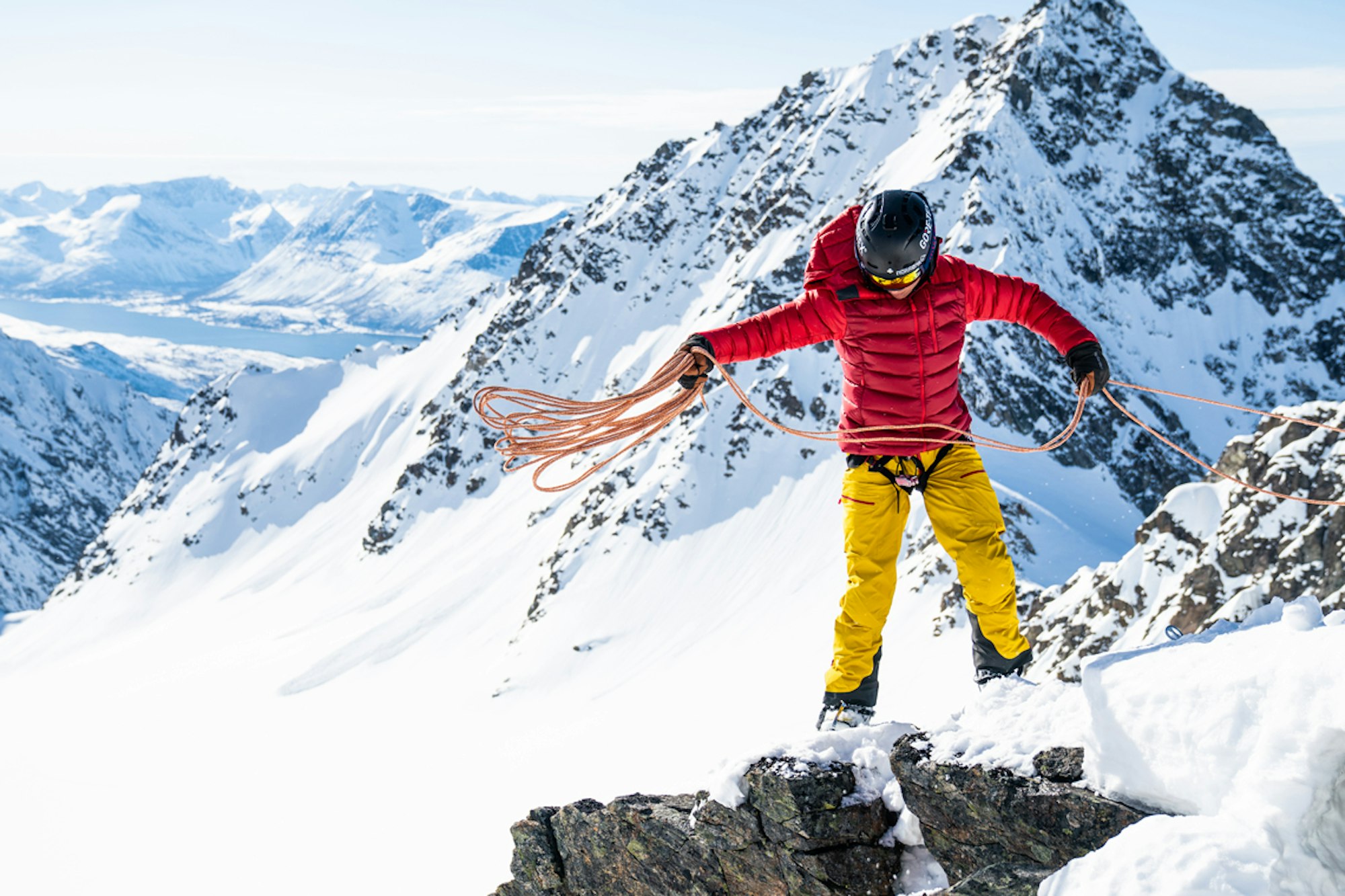
Besides nearly being taken out by that avalanche, what about the trip surprised you most?
I’m happy with how [the avalanche] changed everyone from trying to perform their [personal] best–focused on yourself, how you look, how you ski–to transition really fast to the group dynamics of ‘okay is this where we all want to be, okay you’re going over here.’ Everyone was looking out for each other and communicating better.
It ended up being a pretty gnarly test for the new ski touring line from Norrøna. How did the gear hold up?
The [Women’s Lyngen Gore-Tex] jacket I use all the time still. It’s bright yellow and I have a really hard time keeping things clean, but I used it today biking and it’s still yellow [laughs]. I use it for a lot of other sports, too, I really like it. It sounds silly, you have a double zipper in the front like a ventilation system with a little bit of mesh but I really like that. It helps a lot not having to take your jacket on and off all the time. I’ve never been much of a vest wearer… and I’m sold on [the Women’s Lyngen Alpha90 vest] for fall and spring skiing instead of having to carry a down jacket.
What’s been the most lasting impression this trip has left on you?
That trip got me thinking a lot more about guiding. It’s so much better to just keep it simple with guests. You can have a fun day and do good skiing. The more stories via education or via life experience, you can create a great day out of lots of ambition. It’s much better to keep it simple and fun and just make the call right away and not put people in the position where you have to do that type of [survival] guiding.
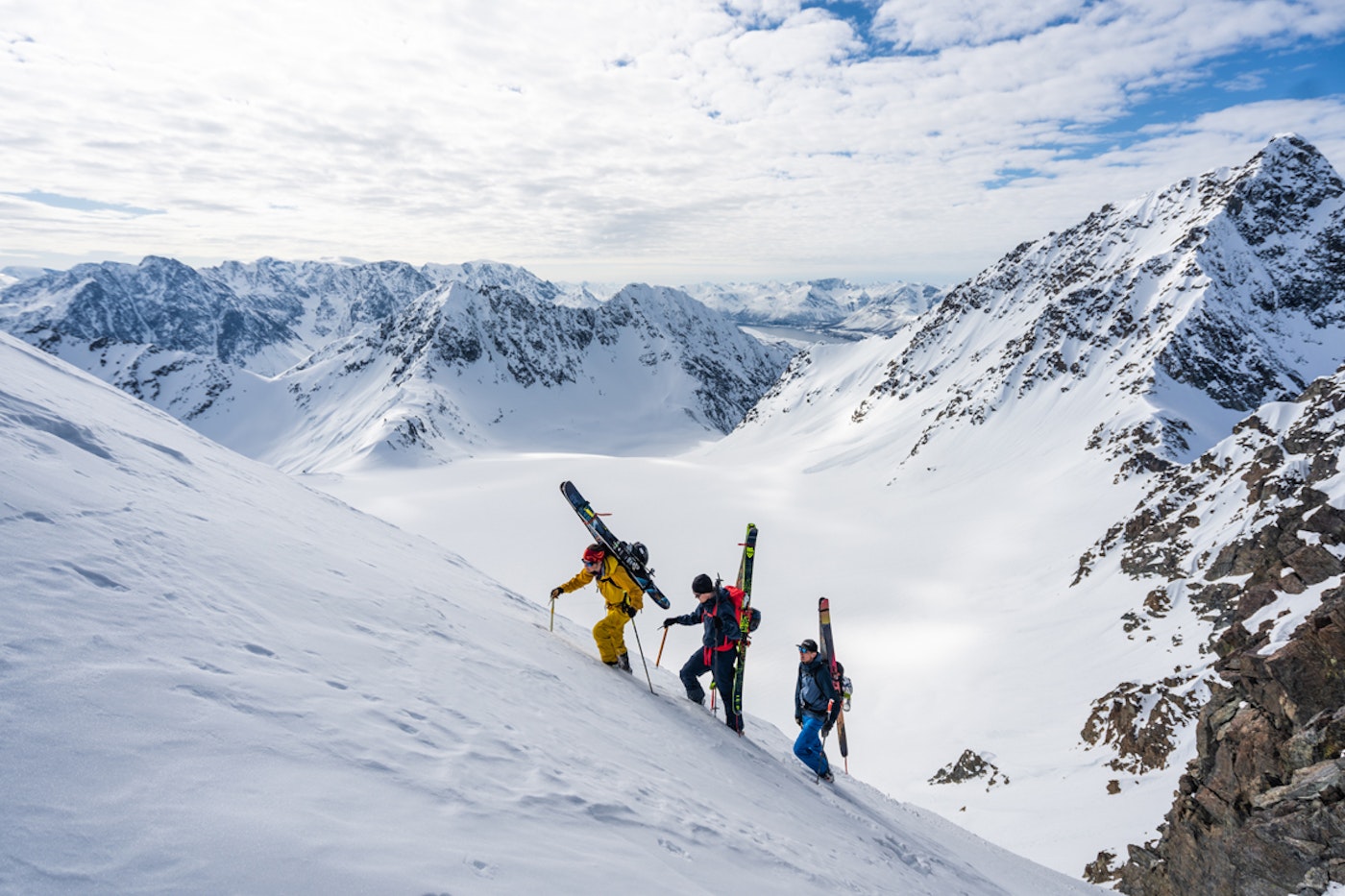
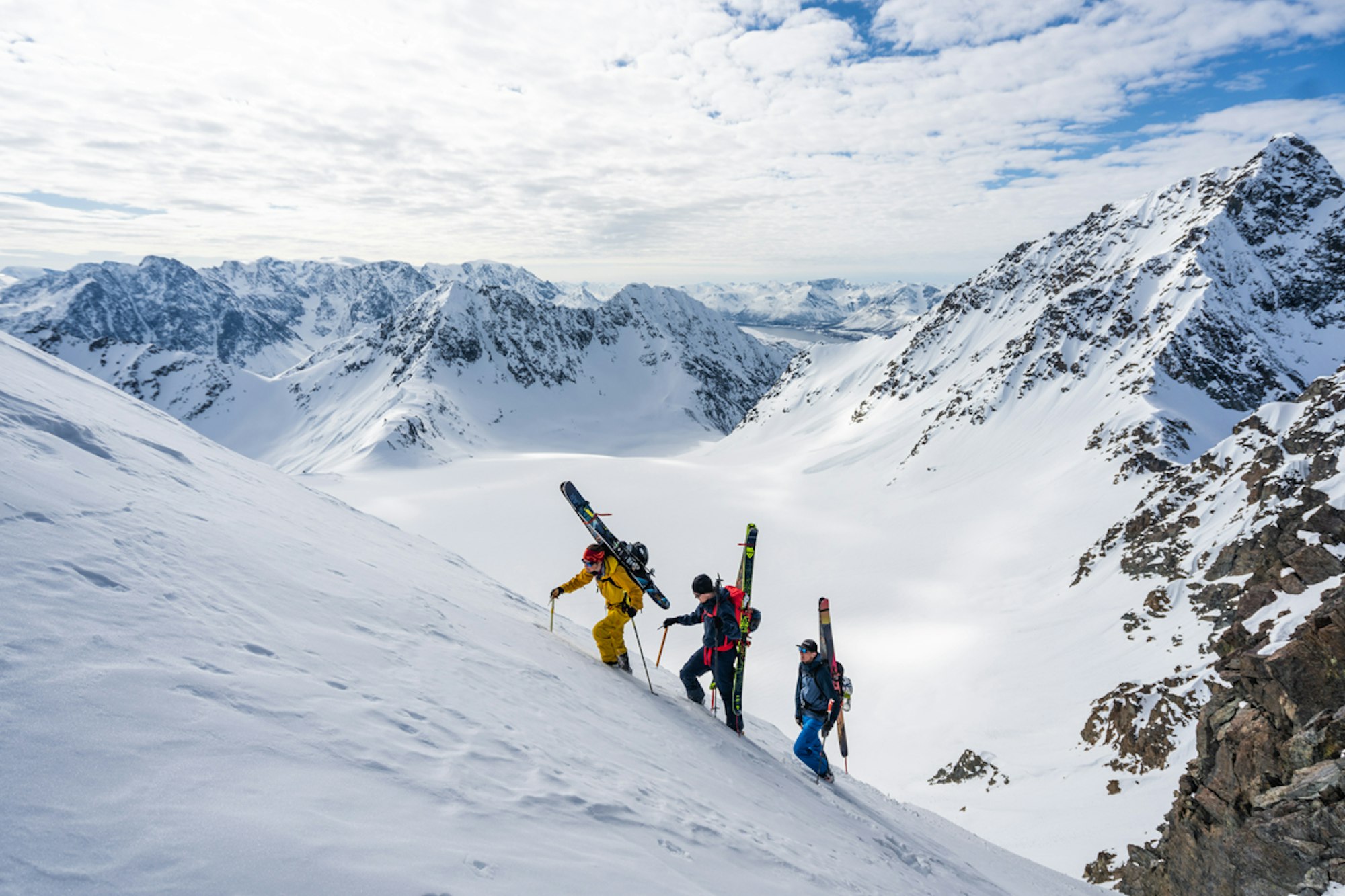
It seems that becoming a mother certainly hasn’t slowed you down.
No, I don’t think so, not really. [My kids] make me want to be a better person and it’s fun. Right now, we were just at the nearby playground and we were the only ones there playing tag on the pump track. I was on a skateboard; my daughter was on a bike and my son was on a scooter and we were all dripping sweat just having so much fun. It’s good that my kids like that I play with them. I see a lot of people on their phones and their kids are playing on the playground. I try doing activities where we’re all playing. They’ve inspired me and I’m much stronger at a lot of things right now than I have been just because I want to play also.
Finally, what’s next for skiing’s Wonder Woman?
I don’t usually make goals [for myself] but I did make goals this last winter and I completed all of them except one: the ersfjordtravers–an exposed ridge traverse of eight mountains on the island Kvaløya, 45 minutes west of Tromsø. I want to do some more alpine technical skiing that is longer. You get really good access from a boat on the northeast side of Lyngen and there’s these 1,500-meter [~5,000-foot] couloirs that go right into the ocean.
I’d [also] love to start a ladies’ group here. There’re some awesome women in Tromsø. I know Angel [Collinson] just a little bit and Elyse [Saugstad] from Alaska, because they’re in the huge women’s segment for [Matchstick Productions’] All In, it would be so awesome to collaborate and coordinate to have them here. To have a movie showing here and getting the women’s scene hyped and spread this ladies’ movement. Those ladies are charging and it’s great to see.

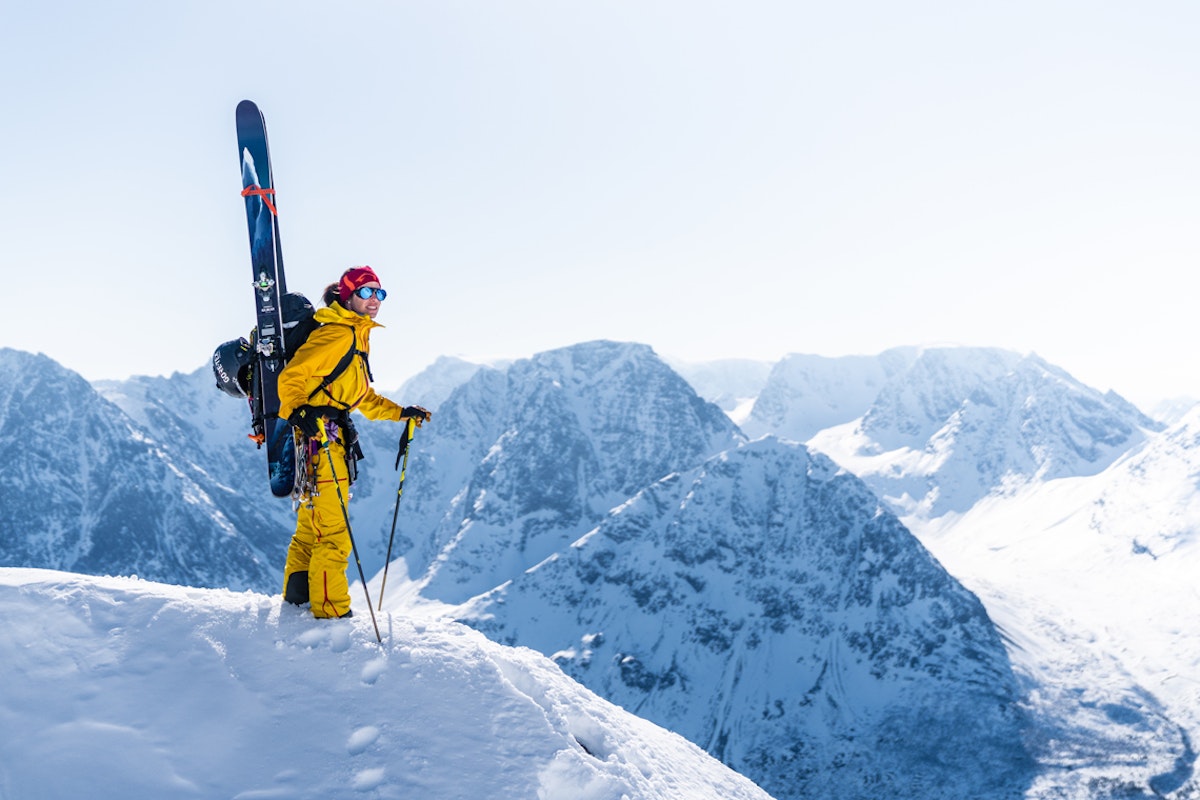

![[GIVEAWAY] Win a Head-to-Toe Ski Setup from IFSA](https://www.datocms-assets.com/163516/1765920344-ifsa.jpg?w=200&h=200&fit=crop)


![[GIVEAWAY] Win a Legendary Ski Trip with Icelantic's Road to the Rocks](https://www.datocms-assets.com/163516/1765233064-r2r26_freeskier_leaderboard1.jpg?auto=format&w=400&h=300&fit=crop&crop=faces,entropy)




![[GIVEAWAY] Win a Head-to-Toe Ski Setup from IFSA](https://www.datocms-assets.com/163516/1765920344-ifsa.jpg?auto=format&w=400&h=300&fit=crop&crop=faces,entropy)


